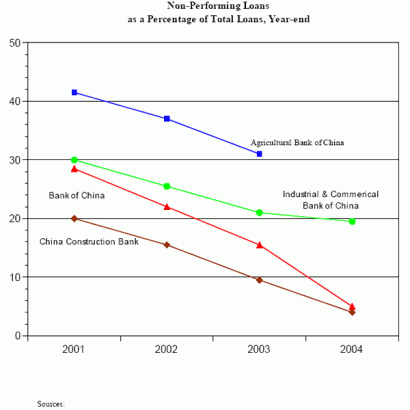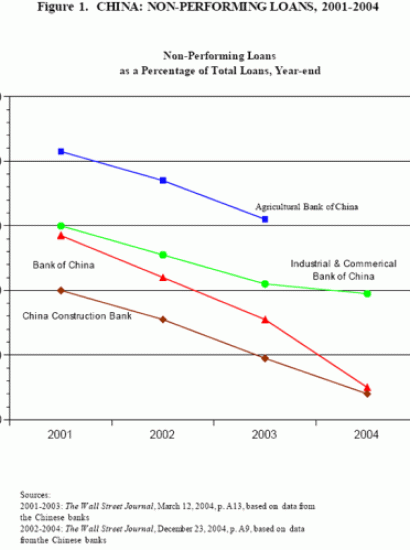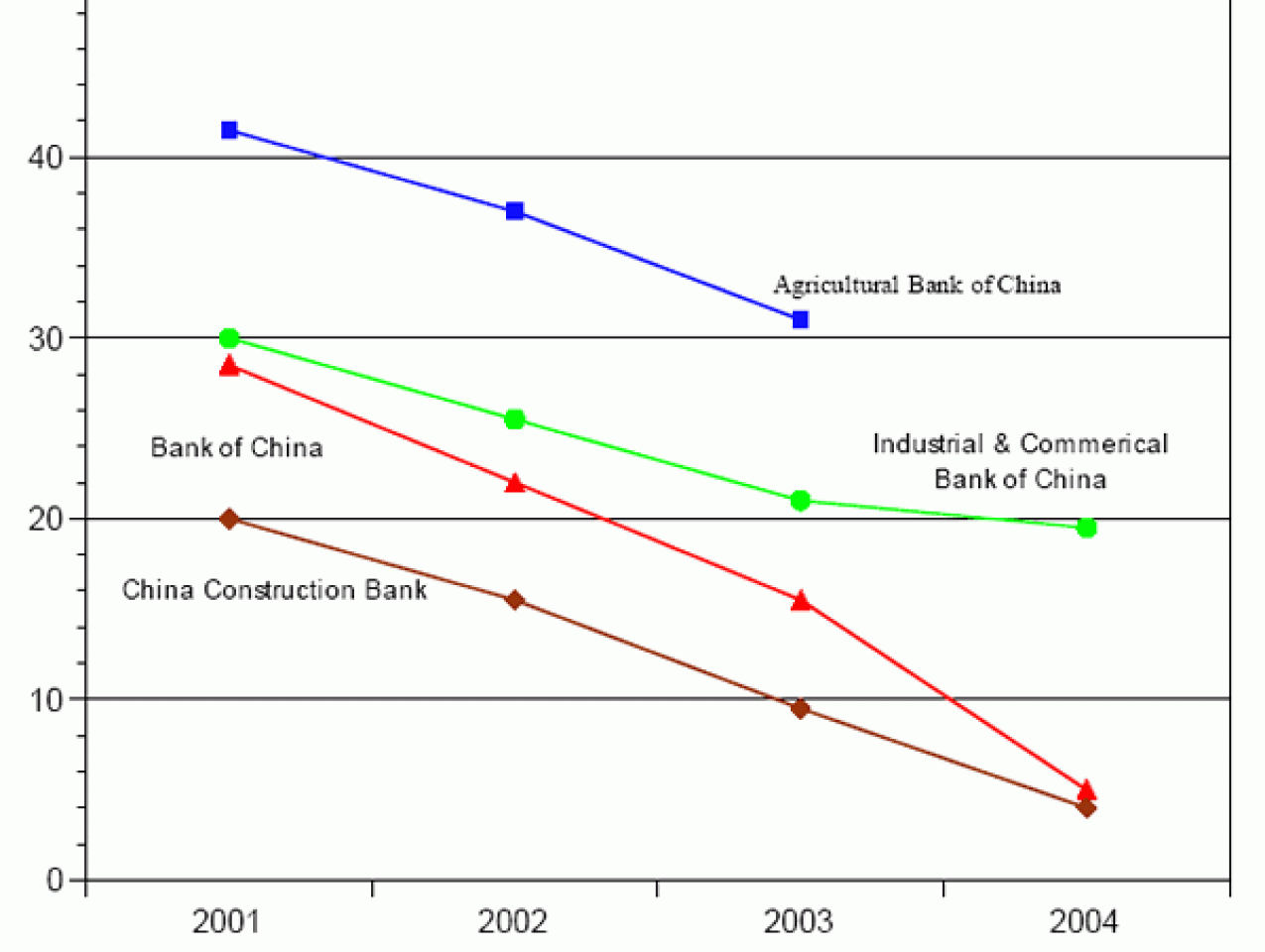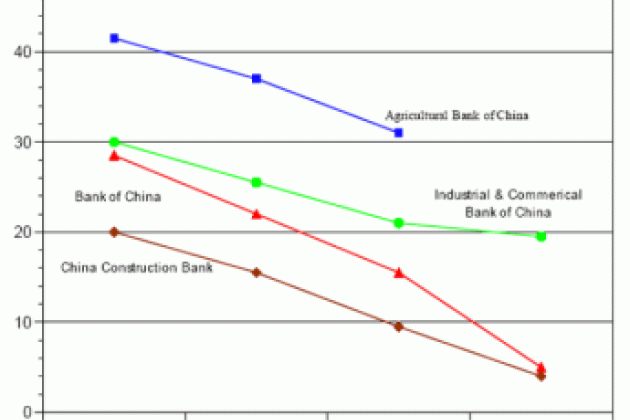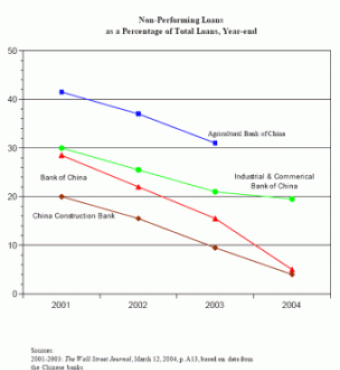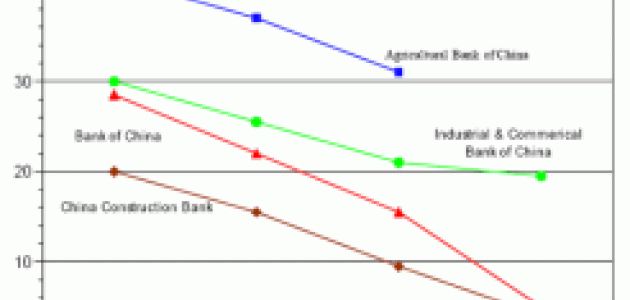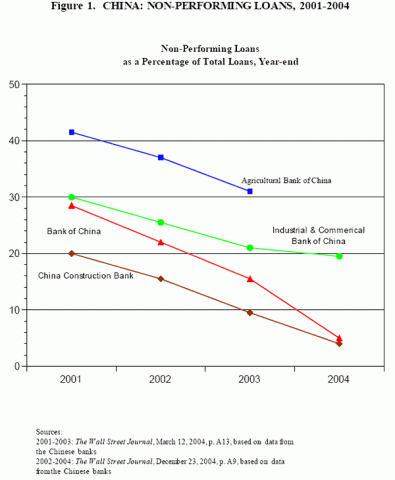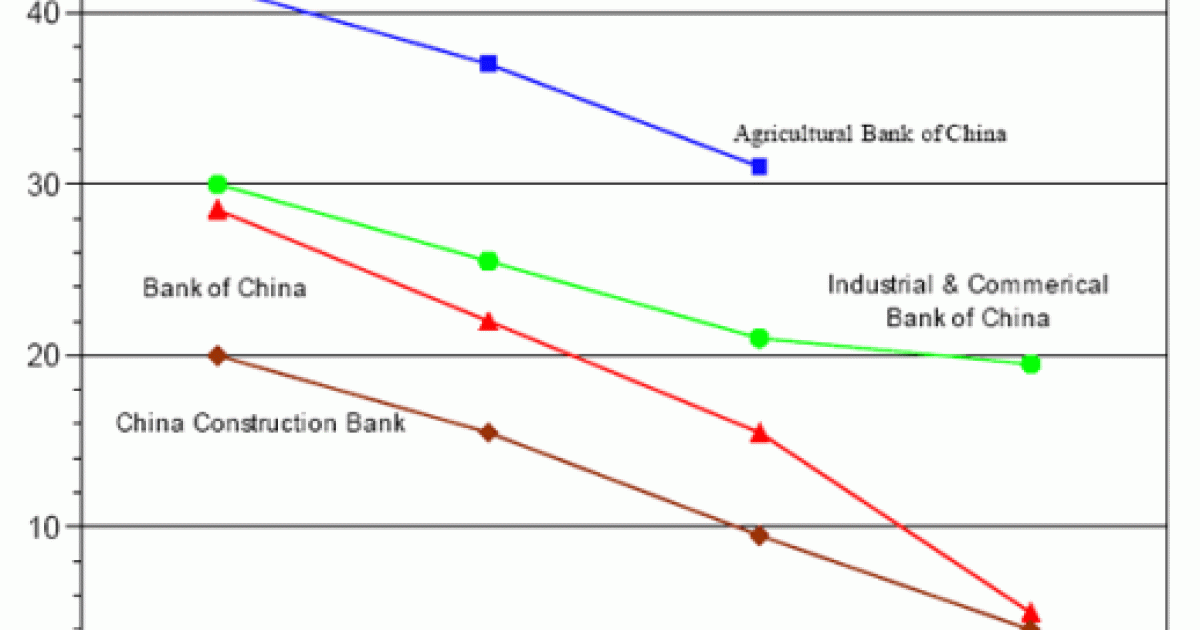- Economics
- Law & Policy
- Regulation & Property Rights
- International Affairs
A terse announcement in China Daily on February 24, 2005, deserves a brief note.
Enterprises adopting debt-for-equity swaps will get new tax breaks to boost their strength, according to a circular published on Tuesday on the website of the State Administration of Taxation. The policy support, experts said, confirmed the government's pledge to further stimulate the reforms of the country's state-owned enterprises and relieve the country of heavy non-performing loan burdens. (...)
China established four asset management companies (AMCs)—Huarong, Cinda, Orient, and Great Wall—in 1999 to tackle the rising non-performing loans of the country's four major banks—the Industrial and Commercial Bank of China, Bank of China, the Agricultural Bank of China, and China Construction Bank. The four AMCs conducted a series of debt-for-equity swaps with around 580 state-owned enterprises, involving more than 400 billion yuan ($48.3 billion) of debt. (...) The debts were transferred into equities which the AMCs controlled in the enterprises. Then, a new holding company would be set up, according to the contract of the debt-for-equity swap.1
This is exactly the policy which we predicted in 2004, on systemic grounds, to evolve in China's fixing its non-performing loans2, and which we proposed for Russia in 19983. This unique policy leads to restructuring of enterprises, not only banks, and, hence, restructuring of borrowers, not only creditors. Meanwhile, as figure 1 demonstrates, non-performing loans continued to decline rapidly through 2003-2004.
Most importantly, China's policy is systemic. It does not treat ownership and property types as an isolated matter, as was done during privatization in Russia, allowing new private owners to replace the government in redistributing income and suppressing productive incentives.4 In China, by contrast, change of ownership and property rights as such are treated as part of the systemic approach directed towards minimizing and forestalling income redistribution. To wit, property rights should not be a vehicle for private owners to extract public subsidies.5
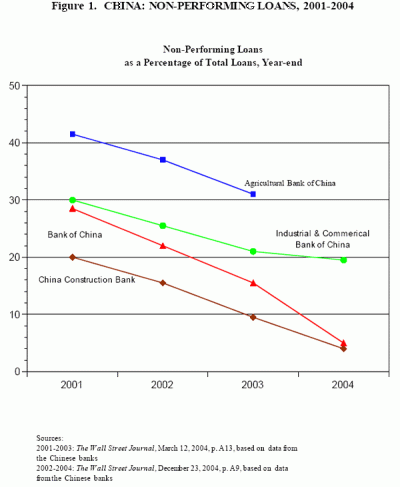
1. "New Measure to Stimulate SOE Reform," China Daily, February 24, 2005
2. "Fixing China's Banks, Not Russia's," point 2 on p. 3.
3. See Fixing Russia's Banks, pp. 91-98.
4. See Chapter 1 of From Predation to Prosperity and "Fixing China's Banks, Not Russia's."
5. Chapter 3 of From Predation to Prosperity discusses in detail the empirical and systemic relationship between various types of property rights and income redistribution around the world.







